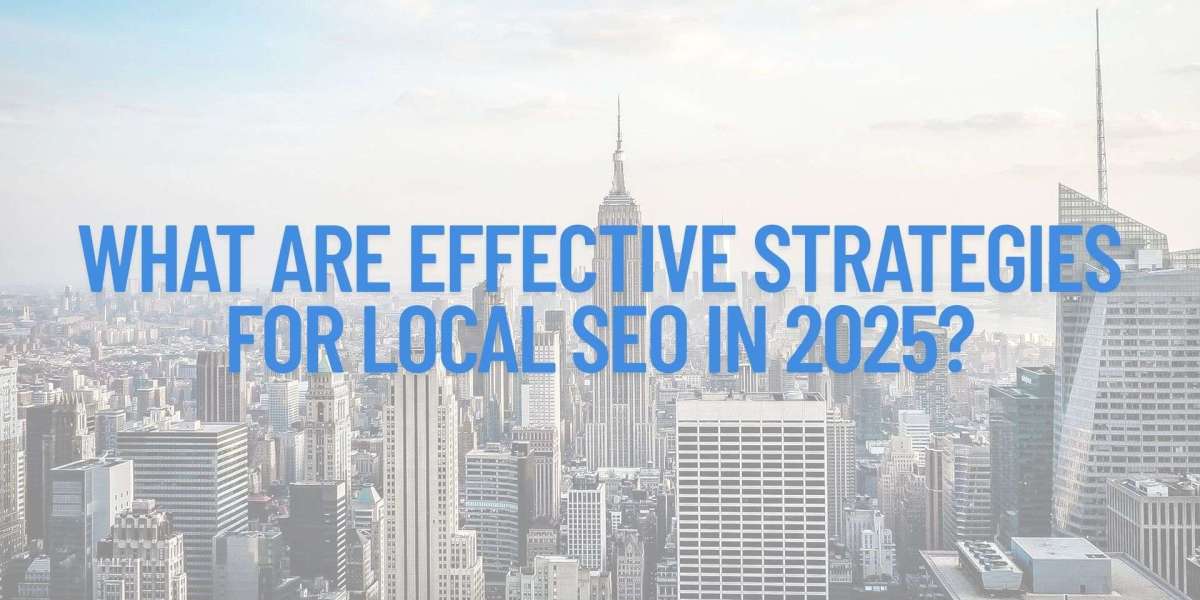Local SEO in 2025 isn’t just about maps and listings anymore—it’s about becoming undeniably relevant to the people who live, work, and scroll in your community. But here’s the real story: the rules of local visibility are shifting faster than ever, and the tactics that worked last year could sink you this year if you're not paying attention.
So, what does it really take to dominate local search results in 2025?
Let’s dig into the strategies that are actually working—no fluff, no filler, just the good stuff.
List of Local SEO Strategies That Actually Work in 2025
Voice Search is the New Normal—Optimize Like You Mean It
Let’s cut to the chase. People aren’t typing “best tacos near me” anymore—they’re asking their phones, cars, smartwatches, even fridges.
In 2025, over 60% of local searches are now voice-driven. That means your SEO content must sound like an actual human question. No more robotic keyword stuffing. Think: “Where can I find eco-friendly dry cleaners in my neighborhood?” instead of just “eco dry cleaner [city name].”
To ride the voice-search wave:
- Use natural language and long-tail keywords.
- Incorporate FAQs into your site and Google Business Profile (GBP).
- Optimize for mobile and fast load speeds—voice search happens on-the-go.
If your website still reads like a 2010 SEO manual, it’s time to flip the script.
Hyperlocal Content: From "Near Me" to "Right Here"
Let’s be honest—“local” is no longer just your city. It’s your block, your corner, your postcode. In 2025, Google’s algorithm is laser-focused on micro-geography.
Winning businesses aren’t just adding city names to their page titles—they’re writing about local landmarks, events, and even school fundraisers. They’re not saying “we serve Dublin”—they’re publishing blog posts about how to park near Dublin’s Ranelagh Market on Saturdays.
To win hyperlocal:
- Create location-specific landing pages (without duplicate content, please).
- Include local news, stories, and guides that your actual customers care about.
- Mention neighborhoods, intersections, and nearby businesses organically.
Your goal: become the go-to digital voice of your area—not a faceless brand parachuting into local search.
Google Business Profile: Still King, but Now a Content Channel
It’s not new. But in 2025, Google Business Profile (GBP) is no longer just a place to drop your hours and phone number—it’s your local marketing hub.
What’s different this year?
- Google Posts now show up more prominently in search.
- GBP updates and Q&As influence ranking more than ever.
- Google is testing short-form video content right on profiles.
The businesses that rank aren’t just claiming their profiles—they’re treating them like a mini social media platform. Weekly posts. Event announcements. Limited-time offers. Real-time updates.
Action steps:
- Add photos and videos regularly (yes, real ones).
- Encourage customers to ask questions and leave reviews—then reply.
- Post local updates like you would on Instagram.
If your GBP is a ghost town, you’re invisible. Period.
Online Reviews: The Real Local Currency
Let’s not dance around it: reviews make or break local rankings—and your reputation.
But here’s the shift in 2025: Google is weighing review frequency, response time, and sentiment trends over sheer star counts.
That means:
- A 4.4-star business with daily, thoughtful reviews will outrank a 5.0-star listing with six stale testimonials from 2022.
- AI-detected review authenticity matters. Incentivized or fake reviews? You will get caught—and tanked.
To build a credible review strategy:
- Ask every happy customer to leave a review (right after a great experience).
- Use QR codes on-site, follow-up emails, and even NFC-enabled review prompts.
- Respond to every single review, even the bad ones—with empathy, not boilerplate.
In short, act like your reviews are part of your website. Because to Google—they basically are.
Local Link Building: The Underrated Power Move
You can’t game your way to top rankings anymore. Google’s smarter than that. But you can build genuine authority through local backlinks—and they work like magic when done right.
We’re talking about:
- Getting listed on local directories and chamber websites.
- Sponsoring community events, schools, or charities (they’ll often link to you).
- Writing for local blogs or news outlets—offer insights, data, or even guest columns.
Pro tip: Make it easy for them. Provide a bio, logo, and ready-to-use link text.
Think of link building like digital word-of-mouth—it takes work, but the payoff lasts.
Schema Markup: Speak Google’s Native Language
Want your business to appear with star ratings, event info, or FAQs right in the search result?
You’ll need schema markup—and if that sounds technical, well... it is. But it’s essential.
In 2025, Google relies even more on structured data to understand context, especially in competitive local markets.
Types of schema you should have:
- LocalBusiness schema
- Review schema
- FAQ and How-To schema
- Event schema (if applicable)
If your dev team isn’t already implementing this, ask why. If you’re DYing, tools like Google’s Structured Data Markup Helper or plugins for WordPress can help.
Bottom line: Schema makes your listings shine—literally.
Local SEO is Now a Team Sport: Get Social, Get Involved
This might sound out of place, but stay with me: Google now considers social signals, brand mentions, and local engagement in its local ranking mix.
That doesn’t mean spamming hashtags or pumping out memes. It means:
- Sharing local-centric content on social media platforms.
- Engaging with other local businesses and influencers.
- Creating content that gets shared, discussed, and linked to within your city.
In 2025, local SEO isn't just a checklist. It's a living strategy—one that rewards authentic community participation.
Mobile UX: If It’s Not Fast, It’s Forgotten
Newsflash: Your customers aren’t searching from a desktop. If your mobile site loads like it’s on dial-up, you’re dead in the water.
Local search is inherently mobile-first. Think about it—people are searching while walking, commuting, or waiting in line.
Here’s what you need:
- Lightning-fast load times (under 2 seconds is the goal).
- Clickable phone numbers and clear contact buttons.
- A homepage that answers all key questions without endless scrolling.
Don’t just check for mobile “friendliness.” Test for real usability. Try your site in a coffee shop with weak Wi-Fi. That’s your real-world scenario.
AI and Personalization: The Invisible Hand of Local Rankings
Let’s talk about the elephant in the SERP: AI is everywhere, and it’s changing how local results show up.
In 2025, your search results might look completely different from your neighbor’s—even if you live in the same building. Why?
Because Google is using:
- Behavioral patterns (clicks, reviews, dwell time).
- Search history and personal preferences.
- Conversational AI features (like Google’s SGE) to generate dynamic results.
So what can you do?
- Make your content answer real, specific questions.
- Improve on-site engagement—think embedded videos, clickable FAQs, dynamic maps.
- Stop optimizing for keywords—optimize for people.
In this era, relevance beats volume. Every time.
Conclusion:
Here’s the truth: local SEO in 2025 is less about tricking algorithms and more about proving your value to real people in real places.
If you’re not willing to show up—digitally and physically—you’ll get outranked by someone who is.
The strategies we’ve outlined aren’t theories. They’re happening now. The businesses winning in local search are investing in trust, connection, and quality—and they’re doing it consistently.
And if you’re feeling overwhelmed? Don’t sweat it. There are affordable local SEO services out there that specialize in bringing your business to life online—without blowing your budget or cutting corners.
The local pack has changed. But with the right strategy, you won’t just be part of it—you’ll lead it.
FAQs:
1. What exactly is local SEO and how is it different in 2025?
Local SEO is the practice of optimizing your online presence to attract more business from relevant local searches—especially those on Google. In 2025, it's no longer just about keywords and listings. It now involves voice search optimization, hyperlocal content, schema markup, and active engagement with your local community both online and offline. The focus has shifted toward authenticity, user experience, and real-time relevance.
2. How can small businesses compete with bigger brands in local search results?
Here’s the good news: local SEO actually levels the playing field. Google prioritizes relevance and proximity, not just budget. By claiming your Google Business Profile, earning genuine reviews, posting localized content, and getting backlinks from local organizations, even a one-location business can outrank a national chain—if you’re showing up where it counts.
3. Is having a Google Business Profile really that important?
Absolutely—think of it as your digital storefront. In 2025, an optimized Google Business Profile isn’t optional, it’s critical. It not only helps you appear in local search results but also gives you tools to engage customers directly through posts, photos, Q&As, and real-time updates. If you ignore it, you’re effectively shutting the lights off on your online presence.
4. Are online reviews still relevant for local SEO?
Yes, and more than ever. Reviews are now a ranking factor and a trust signal. But it’s not just about stars—Google looks at how recent, frequent, and authentic your reviews are, plus how you respond. Think of reviews as public conversations with your customers that influence both Google and future buyers.
5. How long does it take to see results from local SEO efforts?
It depends on your starting point, but with a solid strategy, most businesses begin seeing noticeable improvements within 3 to 6 months. Local SEO is not an overnight game—it’s about building consistent trust signals. That said, optimizing your Google Business Profile, earning reviews, and creating localized content can produce early wins, even while the longer-term benefits kick in.

